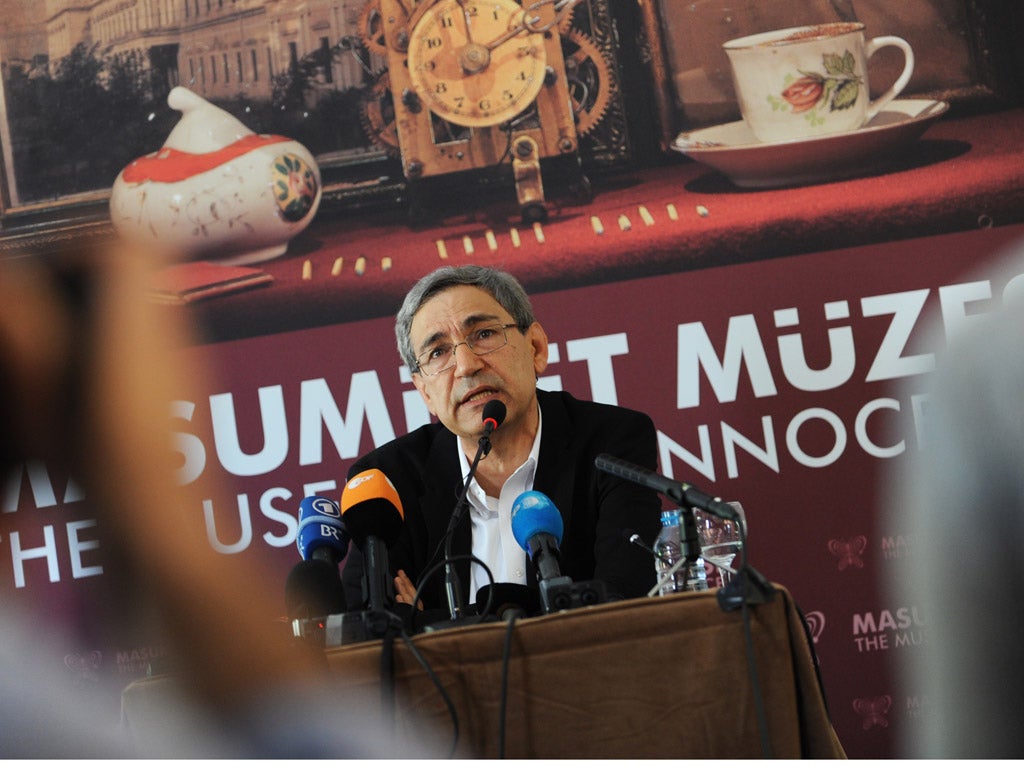Orhan Pamuk's Museum of Innocence is now a reality. Can we do something similar in London?
Walking through the streets of Istanbul, our Notebook writer came across a charming realisation of a literary idea. We should do some of that closer to home, too


Istanbul, where I recently spent my honeymoon, is a great walking city. You can turn down an unpromising-looking side street off the Istaklal Caddesi – the main shopping drag – and in minutes find yourself in a maze of trendy art and antique shops. One day we found ourselves in Cukurcuma Street, and noticed an oddly shaped, purple building before us. It was called The Museum of Innocence.
The name rang a bell. Wasn’t that the title of a novel written by the Turkish writer Orhan Pamuk, after he won the Nobel Prize in 2006? It was. So had he used this magenta gallery for some metaphorical purpose? Inside, it took a while to realise what we were seeing, and how amazing it was.
The Museum is the book, solidified before you through a thousand physical details, arrayed inside glass vitrines. Box-camera photographs summon the lost childhood of the novel’s protagonist, Kemal, and his posh parents in 1950s and 1960s Istanbul. Sewing machines, toys, scent bottles, cotton reels, identity cards, clocks, books of matches, pearls, stuffed birds, hurricane lamps and a million little objets from mantlepieces, bathroom cabinets, dressing tables and garages all contribute to the story of Kemal’s seduction of a shop girl, Fusun, his later search to get her back, and his obsessive building of a shrine of objects to her memory.
It’s a wonderful thing that, to appreciate this collection of resonant ephemera from the shores of the Bosphoros and the Golden Horn, you don’t need to have read the book. You understand its tragic narrative arc by a kind of osmosis, by gazing in on the life told through these pathetic details. And you bring to it a narrative of your own, a nostalgia for your own past that makes, say, a Turkish quince grater from 1953 seem poignant and personal. The museum blends a bittersweet love story with a loving evocation of a city.
It’s an extraordinary achievement by the Turkish master – and an egomaniacal one. Who would think of turning his own novel into a public museum? A few writers spring to mind. James Joyce would surely have applauded the idea, since he did something similar for Dublin: you can imagine 18 display cabinets for each of the 18 chapters of Ulysses. Gunter Grass lovingly evoked his native Danzig in his trilogy, Cat and Mouse, Dog Years and The Tin Drum.
But who has written a museum-novel that could evoke London? Where’s the metro-fiction that’s so textured and evocative that it could become a gallery of exhibits? Bleak House? Oliver Twist? Not really. Hangover Square? Too many teacups and antimacassars. London Fields? Too much darts. Brick Lane? Too niche. Absolute Beginners? White Teeth? Where’s our home-grown Pamuk?
Graphic – but not real
Extraordinary to see graphic books turn up in two categories in the Costa Prize, among the novels and biographies. I wish I admired comic-strip fiction as the French do, but it always seems to me a bastard version of the real thing. As one shortlistee, Joff Winterhart, says, “My book isn’t a novel in the conventional sense, it’s a comic with pictures and speech boards.” Quite.
Good novels are made of words, without drawings that helpfully show the expressions on characters’ faces. It’s cruel but true: illustrations in novels are for children, or those who have trouble keeping up.
Join our commenting forum
Join thought-provoking conversations, follow other Independent readers and see their replies
Comments